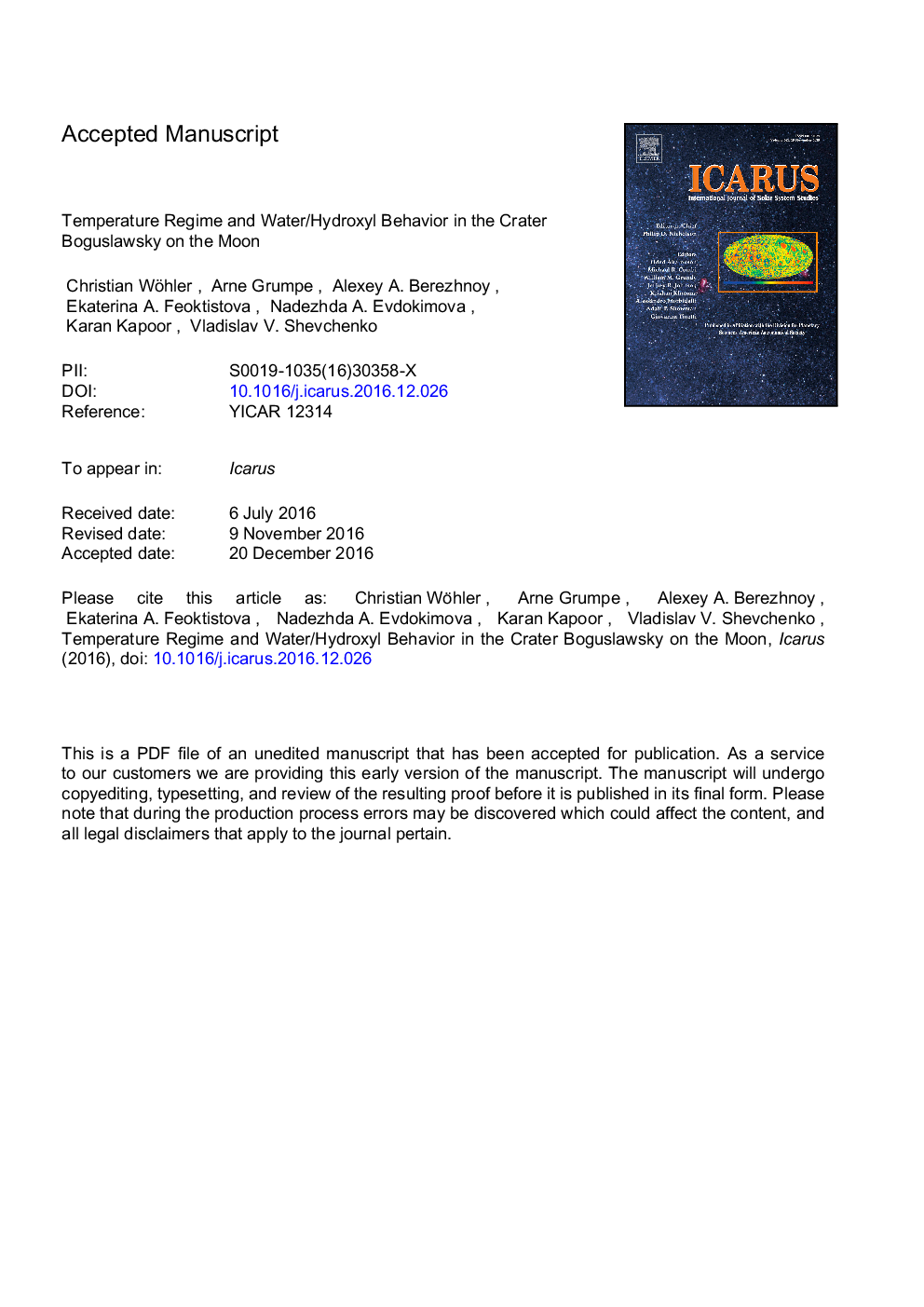| کد مقاله | کد نشریه | سال انتشار | مقاله انگلیسی | نسخه تمام متن |
|---|---|---|---|---|
| 5487059 | 1523506 | 2017 | 33 صفحه PDF | دانلود رایگان |
عنوان انگلیسی مقاله ISI
Temperature regime and water/hydroxyl behavior in the crater Boguslawsky on the Moon
دانلود مقاله + سفارش ترجمه
دانلود مقاله ISI انگلیسی
رایگان برای ایرانیان
کلمات کلیدی
موضوعات مرتبط
مهندسی و علوم پایه
علوم زمین و سیارات
علوم فضا و نجوم
پیش نمایش صفحه اول مقاله

چکیده انگلیسی
In this work we examine the lunar crater Boguslawsky as a typical region of the illuminated southern lunar highlands with regard to its temperature regime and the behavior of the depth of the water/hydroxyl-related spectral absorption band near 3 µm wavelength. For estimating the surface temperature, we compare two different methods, the first of which is based on raytracing and the simulation of heat diffusion in the upper regolith layer, while the second relies on the thermal equilibrium assumption and uses Moon Mineralogy Mapper (M³) spectral reflectance data for estimating the wavelength-dependent thermal emissivity. A method for taking into account the surface roughness in the estimation of the surface temperature is proposed. Both methods yield consistent results that coincide within a few K. By constructing a map of the maximal surface temperatures and comparing with the volatility temperatures of Hg, S, Na, Mg, and Ca, we determine regions in which these volatile species might form stable deposits. Based on M³ data of the crater Boguslawsky acquired at different times of the lunar day, it is found that the average OH absorption depth is higher in the morning than at midday. In the morning a dependence of the OH absorption depth on the local surface temperature is observed, which is no more apparent at midday. This suggests that water/OH accumulates on the surface during the lunar night and largely disappears during the first half of the lunar day. We furthermore model the time dependence of the OH fraction remaining on the surface after having been exposed to the temporally integrated solar flux. In the morning, the OH absorption depth is not correlated with the remaining fraction of OH-containing species, indicating that the removal of water and/or OH-bearing species is mainly due to thermal evaporation after sunrise. In contrast, at midday the OH absorption depth increases with increasing remaining fraction of OH-containing species, suggesting photolysis by solar photons as the main mechanism for removal of the remaining OH-containing species later in the lunar day.
ناشر
Database: Elsevier - ScienceDirect (ساینس دایرکت)
Journal: Icarus - Volume 285, 15 March 2017, Pages 118-136
Journal: Icarus - Volume 285, 15 March 2017, Pages 118-136
نویسندگان
Christian Wöhler, Arne Grumpe, Alexey A. Berezhnoy, Ekaterina A. Feoktistova, Nadezhda A. Evdokimova, Karan Kapoor, Vladislav V. Shevchenko,